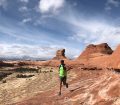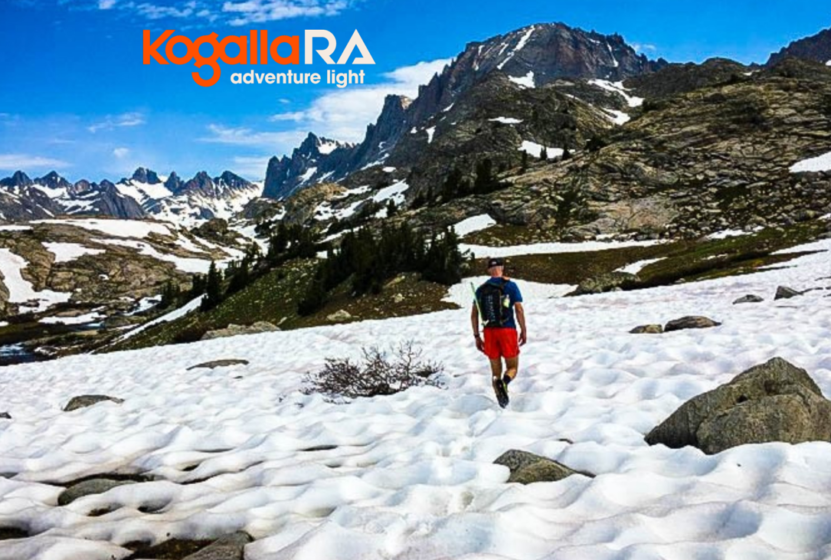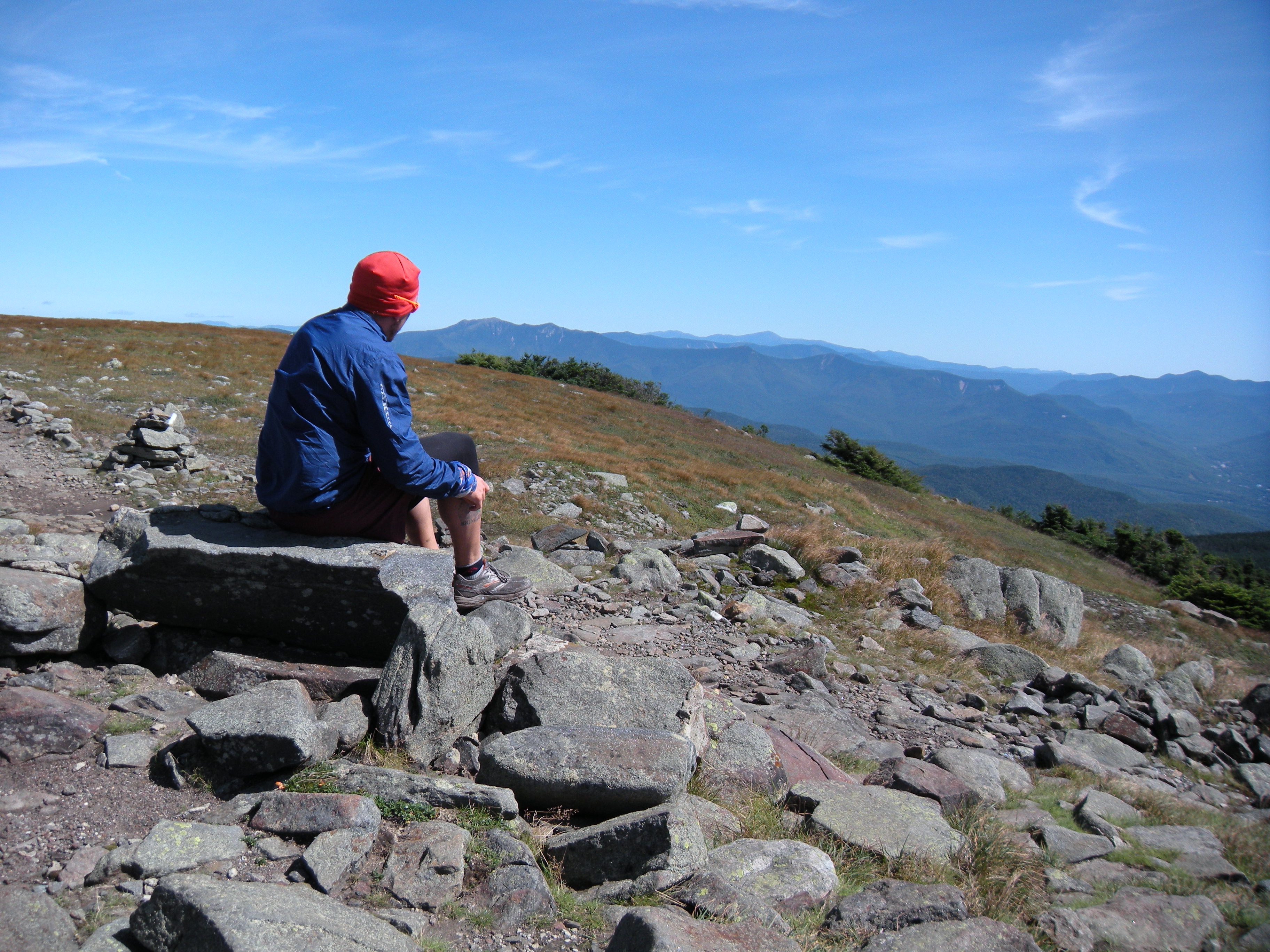Doing long all day runs in the backcountry can be an incredible experience for any ultra runner looking for some adventure. Being able to see several miles of wild and rugged terrain with your running companions will be some of your most memorable experiences as a runner. These long adventure runs don’t have to be a sufferfest; with a few tips and things in place these days will be some of the most memorable for you and your partners.
1. Find the right gear
One of the most important factors in having an excellent all day running adventure is being comfortable. Having the right clothing and gear is an essential part to enjoying your day. Finding what works for you will take time and the only way you will know what works is trying different gear and testing it over time in several different types of terrain and conditions. Whenever I get new gear that I like, I begin to evaluate if it will work on a longer all day effort. I will use the gear on longer runs to see how it performs and test it in similar conditions to what I might go through running all day in the backcountry. This typically gives me an idea of whether or not it will work for a longer run. There are some items that are more important than others and can be the difference between an incredibly enjoyable experience and a nightmare. Take special care in selecting these crucial items for a longer run in the backcountry:
Running Vest
A running vest that fits well doesn’t chafe and can carry all of your items comfortably for hours is crucial. An added bonus is if items are easy to get to so you can eliminate continual stops to remove the vest and retrieve items. The ability to carry a large amount of water comfortably can be vital if your run doesn’t have access to a lot of water. Test your vest beforehand to make sure the ride is comfortable when the water is at max-capacity.
Socks
Having socks that will keep your feet comfortable for several hours is extremely important. It is critical that you test your socks in multiple conditions and environments to make sure that they won’t give you any issues, including wet conditions to see how quickly they will dry and to determine if the comfort level is severely compromised when wet.

Shoes
Running shoes are like tools. Each job requires a different tool and that is certainly the case with running shoes. Knowing what works in the type of terrain where you will be traveling is very important to successfully complete your run. Selecting a shoe that will be comfortable in changing terrain over long periods of time is key. Find a comfortable roomy shoe that performs reasonably well in various terrain and environments. It is likely that during an all-day run you will encounter several miles of running, hiking and climbing and conditions can change from buttery single track to rugged mountain terrain. The goal is to find a comfortable shoe that will be adequate in all of the types of terrain that will be encountered for long periods of time.
If you take the time to test various types of gear and find what works best for you, you will be more comfortable and have a much more enjoyable experience on your all-day adventure runs in the backcountry.
Headlamp
Having a reliable headlamp that you can throw into your vest is vital to any runner who is conscious of being safe and responsible in the backcountry. You simply never know if a particular route will take longer than planned and there is always the risk that something could go wrong and the estimated time to completion gets thrown completely off.
Keep your headlamp charged on a regular basis and put it in a place where it becomes a regular piece of gear that gets included in your vest. If you shop around you can find one that is lightweight and doesn’t take up a lot of space. We are big fans of the Kogalla RA Straplight (pictured below). It offers a massive amount of light, is incredible in its diversity of uses, and it also uses an external battery source, one that can also be used to charge your phone or watch while you’re out. If you haven’t seen them, check them out.
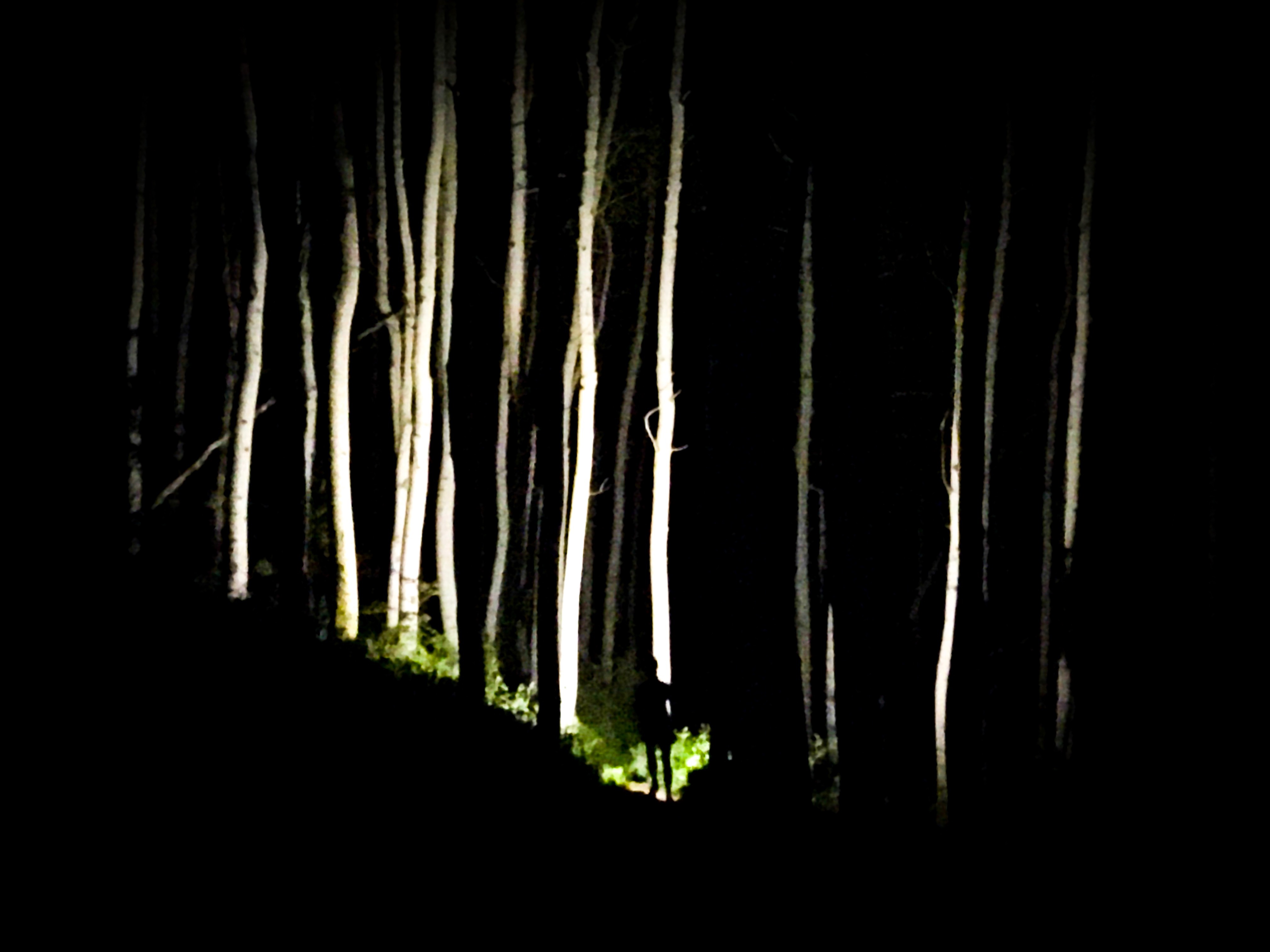
2. Do your research
Understanding all aspects of what you might encounter on the trail is your responsibility, even if you are not leading the group. Get familiar with the trails, terrain, water availability, mileage and elevation profile of the entire route. Determine if there are any permits or requirements for traveling on the trail. Know before you go if there is technical terrain that will require special knowledge or experience to safely cover.

Whenever possible, purchase a map or have a GPS capable device or app that can provide a map of the area. Even on a group adventure, you should show up at the trailhead with the confidence that you could do the entire run by yourself if it became necessary. Reading trip reports from others that have done the route and trying to glean as much information as you can going in will also help you prepare for the types of gear that you’ll need, the amount of food and energy to pack, and how much water you should carry.
3. Learn how to fuel
Fueling is one of the most important aspects of not only finishing long adventure runs in the backcountry but also enjoying them. Finding lightweight sources of energy will give you the necessary fuel and supplemental replacements to complete the run. It really helps to find fuel you can easily consume, and will effectively give you the energy you will need. There are multiple sources of energy replacement on the market today, so test as many as you can in your training to determine what sources your body accepts easily and are efficient for you.

One of the most enjoyable things about long ultra adventure runs is being able to eat real food after several hours of grinding away on the trails. Gels are an excellent source of lightweight energy for long runs, but after awhile they can get very old. When you are getting tired and hungry and your palate starts to do the gel-protest, real food can be such a mental boost to help your mood as well as give you the needed energy to sustain your body for the remainder of the run. Find foods which are not only tasty and enjoyable but will also give you the fats and protein your body will be craving. Find a variety of things you enjoy and will work for you. On a recent long mountaineering route in the Wasatch mountains, a good friend on the run surprised the group with burritos at the summit. They tasted amazing and were such a psychological boost that helped us tackle the remainder of the day. This serves as an example of just how important food and fueling your body is on a long run.
4. Take a first aid kit
Doing long trips into the remote backcountry can be dangerous and there are always risks of injury or sickness. It is prudent to pack a small, light first aid kit containing essentials that can be used in case of an emergency. A few different types of bandages, gauze, mole-skin, and steri-strips are helpful in order to take care of a gash or wound in trying situations. Having medications that can combat pain, nausea, allergies and stomach distress can really make the difference if you start having issues during the run. A pin or a needle can come in handy to quickly take care of a sliver or blister. Antiseptic cleaning wipes can help clean a wound or can even be used to wash your hands. Tweezers and matches/a small lighter are also items that can be useful and convenient to have. It is rare that these things need to be used, but over the years I have utilized just about every item listed on a long run into the remote wilderness. Having the peace of mind is worth a little extra weight and preparation (We love the BC Preps Trail Runner kit for a lightweight, take everywhere option).
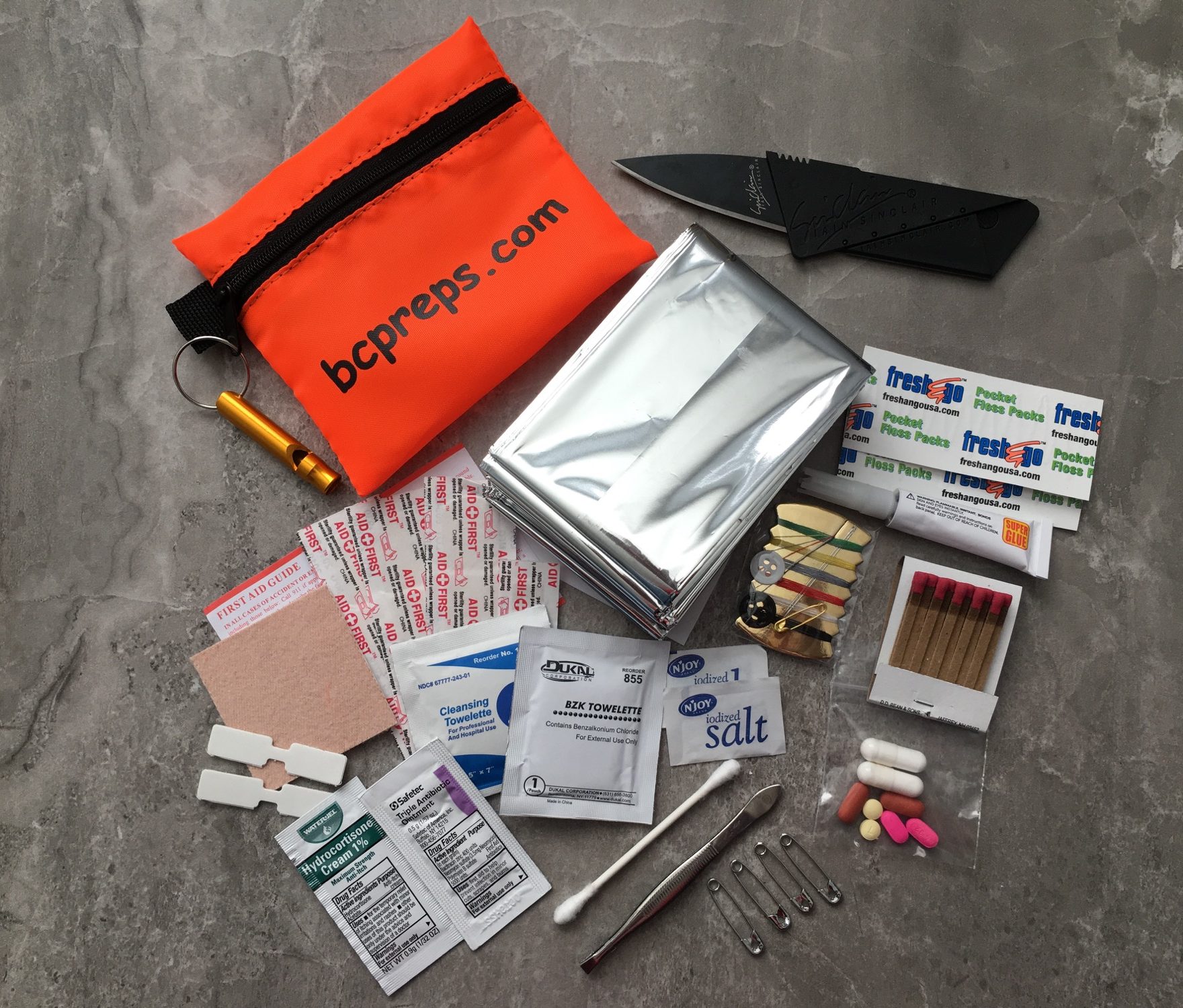
5. Take time to enjoy the ride
It is such a privilege to be able to travel miles on foot into some of the most beautiful and remote places on earth. Traveling fifty or more miles a day in a National Park or scenic area can be a life-changing event and can create memories that you will cherish forever, so take time throughout your run to stop and savor the views, enjoy the moments and relish in the time, space and stage that you are in. Slowing down to enjoy the views can be very satisfying and memorable. Take some time to take pictures; if the run is long and remote there is a chance you may never go back, so take some time to enjoy it. It is supposed to be a fun and unforgettable experience, so make the most of every mile explored.
All day endurance runs can be an enjoyable part of your running life. Start doing things now to prepare to tackle these longer adventures, so when the opportunities come you are confident and ready to embark on a rewarding and memorable experience.
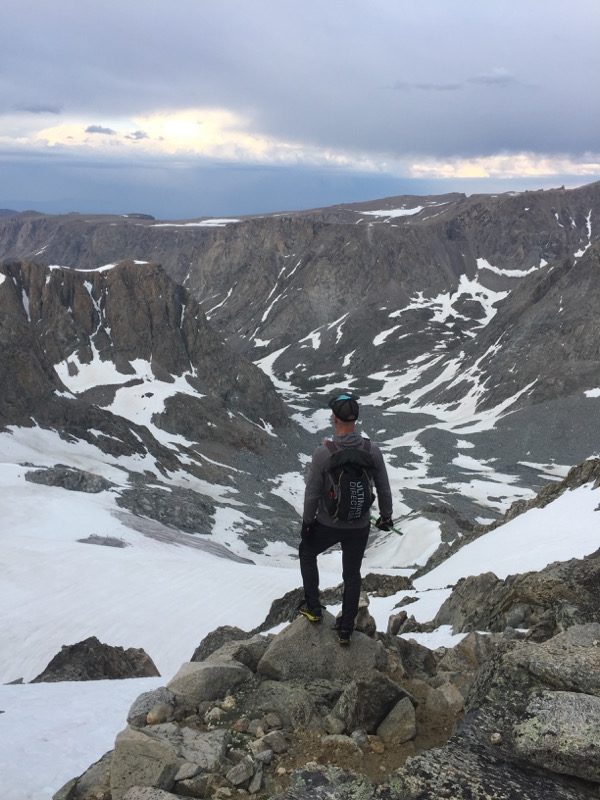
This post was sponsored by Kogalla RA Straplight. For more information, click HERE.
Sponsored by

